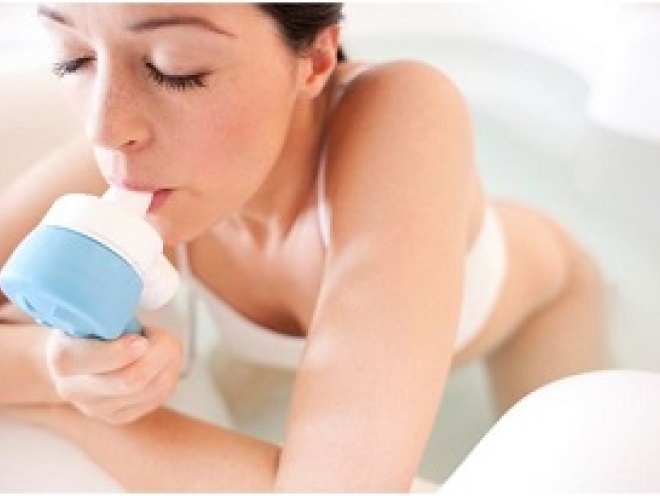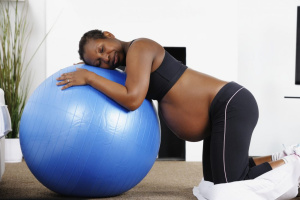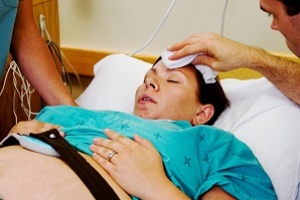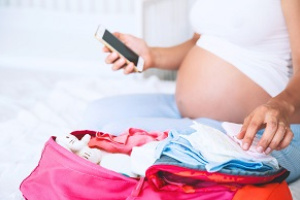You might be keen on having your baby at a birth centre (midwife-led unit) but you’re unsure about the pain relief options. Here’s what you can expect
For lots of women, midwife-led units or birth centres are a great option. They’re less ‘medical’ than a hospital but with more support and back-up than you might think you’d get at a home birth.
You’ll probably want to know exactly what pain relief is available at midwife-led units and whether you can get more if needed. We break it down for you.
Epidurals
They aren’t available outside of hospitals because there needs to be an anaesthetist around to give you an epidural. Midwife-led units and birth centres are staffed by midwives.
It might be a good idea to chat through epidurals with your midwife before you give birth. This might help you to decide whether the lack of epidural option makes a difference to you (NHS, 2015).
Another option is to have your baby in an alongside birth centre, if you have one available near you. Alongside birth centres are on the same sites as hospital labour wards. That means you can be transferred easily if you do want an epidural (Which?, 2018).
If you’re not in an alongside unit, you can be transferred from any midwife-led unit or birth centre to hospital for an epidural too. Your midwife can even phone ahead so you get it as soon as possible.
Gas and air (Entonox)
You inhale gas and air through a mouthpiece and it’s available readily at midwife-led units or birth centres. While it might not take the pain away completely, for a lot of women it dials it down.
Gas and air also has the benefit of having no significant risks for you or the baby. On the other hand, it can make you a bit lightheaded or sick (OAA, 2018).
Pethidine and other injected opiods
These drugs are sometimes available at midwife-led units or birth centres. They relax your muscles and can make you feel sleepy.
Some women love it and feel less anxious. Others find it doesn’t do that much for their pain and can make them feel nauseous, confused, helpless or out of control.
Pethidine and other opiods might also make your baby sleepier and slower to start breastfeeding after they’re born. You could talk to your midwife about whether these drugs are the right pain relief for you (OAA, 2018).
Water in a birth pool
Women find birth pools helpful and that water appears to reduce pain intensity, and might reduce the likelihood of having an epidural. Most studies on birthing in water have not found any problems for babies, or for women, and one recent study from the US found that birthing in water made it less likely that babies would need to be admitted to special care and women were less likely to suffer perineal tears (Cluett et al, 2018).
Just make sure you find out whether your midwife-led unit or birth centre has birthing pools before you go in.
TENS (transcutaneous electronic nerve stimulation) machine
Passes a gentle electric current through pads on your back that can help to reduce pain (NHS, 2018).
You can happily use TENS at midwife-led units or birth centres but not all of them provide them. Find out in advance whether they loan out TENS machines although you can always buy or hire one.
Complementary therapies
Some birth centres offer complementary therapies like acupuncture or acupressure, which some studies have shown can provide pain relief during labour (Raana & Fan, 2020, Smith et al, 2020). This can help you chill out, make contractions feel less painful and reduce the likelihood of you needing stronger pain relief (Smith, 2006; OAA, 2018).
Birth centres are also likely to support hypnobirthing, aromatherapy and reflexology. You might need to arrange for some training in advance and/or a therapist to be with you in labour (OAA, 2018).
A review of these sorts of hypnosis-based interventions during pregnancy found that they improved the childbirth experience, by alleviating fear and pain and enhancing a sense of control (Catsaros, 2020).
They improved women's emotional experience and outlook towards birth with less anxiety, increased satisfaction, fewer birth interventions, more postnatal wellbeing and a better childbirth experience overall (Catsaros, 2020). Other research has found that levels of fear and anxiety around birth are lower in women who use hypnosis techniques (Downe et al, 2015).
Self-help techniques
At a midwife-led unit or birth centre, you’ll also be encouraged to use self-help techniques to manage your pain when you’re in labour.
These can include:
- using different positions to get comfy
- movements like swaying, walking, dancing, circling your hips, and other upright positions that can help your baby’s head to come down
- focusing on breathing out very slowly, panting or blowing
- singing, moaning or humming
- distractions like TV or listening to music
- massages (step forward birth partners)
- relaxation techniques.
Some of these are most useful in the early stages. Other self-help techniques like warm water, movement and focusing on your breathing can work all the way through (Lawrence, 2009; Cluett, 2018; Smith, 2018).
This page was last reviewed in April 2021.
Further information
Our support line offers practical and emotional support with feeding your baby and general enquiries for parents, members and volunteers: 0300 330 0700. We also offer antenatal courses which are a great way to find out more about birth, labour and life with a new baby.
You might find attending one of our NCT New Baby courses helpful as they give you the opportunity to explore different approaches to important parenting issues with a qualified group leader and other new parents in your area.
Make friends with other parents-to-be and new parents in your local area for support and friendship by seeing what NCT activities are happening nearby.
The NHS Maternity unit search (NHS, 2020) can help you to find services, contact details and information. You can contact each unit directly to find out how to book a tour of your birth centre if they are offered, where you can ask questions about what kinds of pain relief are available.
Catsaros S, Wendland J. (2020) Hypnosis-based interventions during pregnancy and childbirth and their impact on women’s childbirth experience: A systematic review. Midwifery. Available at: https://doi.org/10.1016/j.midw.2020.102666 [Accessed 23rd March 2021].
Cluett E, Burns E, Cuthbert A. (2018) Immersion in water in labour and birth. Available from: http://www.cochrane.org/CD000111/PREG_immersion-water-labour-and-birth [Accessed 1st April 2021].
Downe S, Finlayson K, Melvin C, Spiby H, Ali S, Diggle P, et al. (2015) Self-hypnosis for intrapartum pain management in pregnant nulliparous women: a randomised controlled trial of clinical effectiveness. BJOG. 122(9):1226-1234. Available at: https://obgyn.onlinelibrary.wiley.com/doi/abs/10.1111/1471-0528.13433 [Accessed 23rd13th September March 202118].
Homer C, Cheah S, Rossiter C, Dahlen H, Ellwood D, Foureur M, Forster D, McLachan H, Oats J, Sibbritt D, Thornton C, Scarf V. (2019) Maternal and perinatal outcomes by planned place of birth in Australia 2000 – 2012: a linked population data study. BMJ. Available from: https://bmjopen.bmj.com/content/bmjopen/9/10/e029192.full.pdf [Accessed 1st April 2021].
Lawrence A, Lewis L, Hofmeyr GJ, Dowswell T, Styles C. (2009) Maternal positions and mobility during first stage labour. Cochrane Database Syst Rev. (2):CD003934. https://www.cochranelibrary.com/cdsr/doi/10.1002/14651858.CD003934.pub3… Cochrane Database of Systematic Reviews [Accessed 1st April 2021].
NHS. (2015) Where to give birth? Available from: https://www.nhs.uk/conditions/pregnancy-and-baby/where-can-i-give-birth/ [Accessed 1st April 2021].
NHS. (2018) TENS (transcutaneous electrical nerve stimulation). Available from: https://www.nhs.uk/conditions/transcutaneous-electrical-nerve-stimulation-tens/ [Accessed 1st April 2021].
NHS. (2020) Find Maternity services services. Available from: https://www.nhs.uk/Service-Search/other-services/Maternity%20services/LocationSearch/1802 [Accessed 1st April 2021].
OAA. (2018) FAQs pain relief. Available from: http://www.labourpains.com/UI/Content/Content.aspx?ID=29 ] [Accessed 1st April 2021].
Raana & Fan (2020). The effect of acupressure on pain reduction during first stage of labour: A systematic review and meta-analysis. Complementary Therapies in Clinical Practice 39: 101126
Smith A, Collins C, Cyna A, Crowther C. (2006) Complementary and alternative therapies for pain management in labour. Cochrane Database Syst Rev. (4):CD003521 Available from:https://www.cochranelibrary.com/cdsr/doi/10.1002/14651858.CD003521.pub2… [Accessed 1st April 2021].
Smith CA, Levett KM, Collins CT, Armour M, Dahlen HG, Suganuma M. (2018) Relaxation techniques for pain management in labour. Cochrane Database Syst Rev. (3):CD009514. Available from: http://cochranelibrary-wiley.com/doi/10.1002/14651858.CD009514.pub2/full] [Accessed 1st April 2021].
Which? (2018) Pain relief during labour: what’s available? Available from: https://www.which.co.uk/birth-choice/coping-with-pain-in-labour/pain-relief-during-labour-whats-available [Accessed 1st April 2021].








